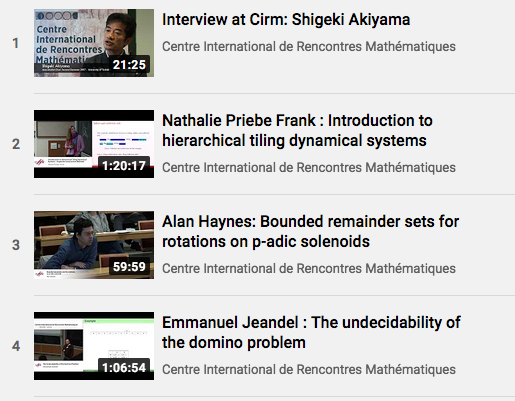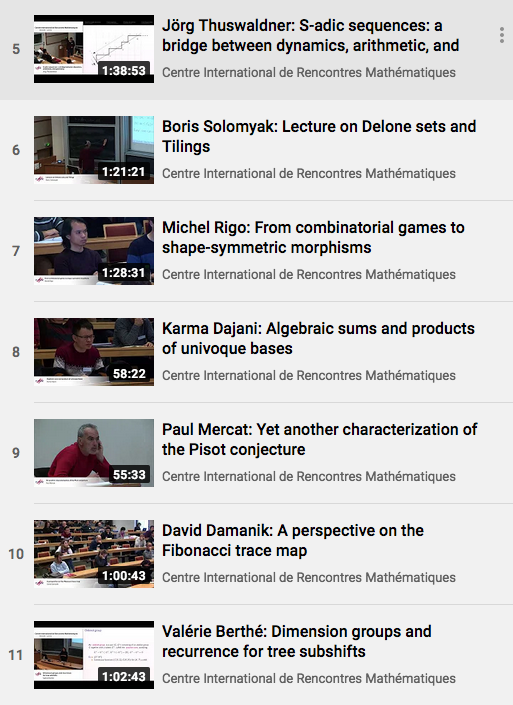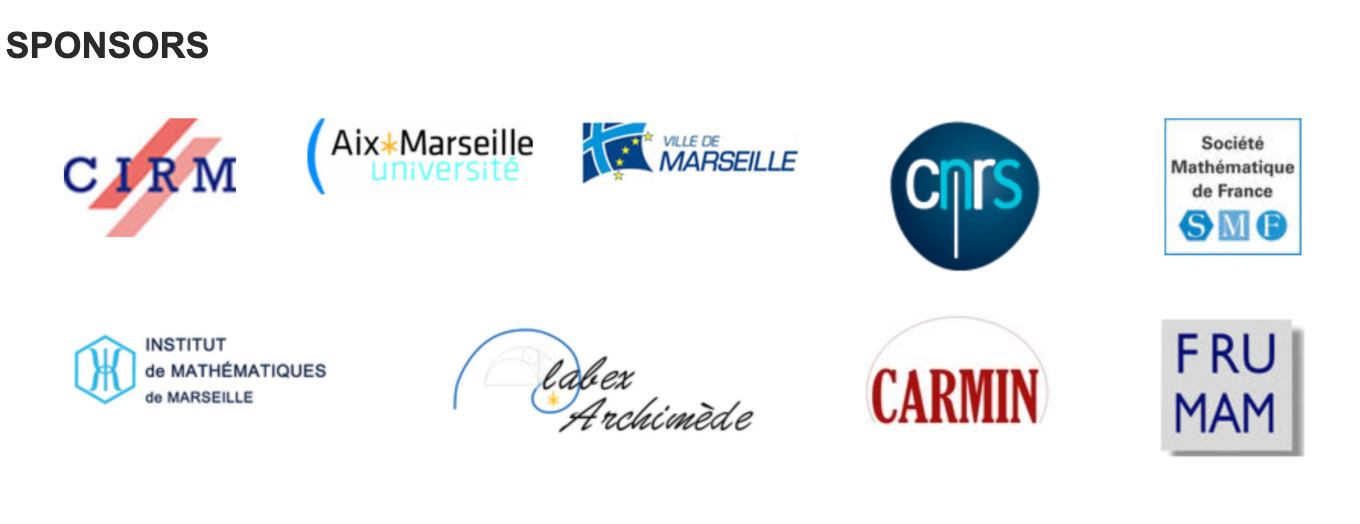Tiling Dynamical System (1720)
Pavages et systèmes dynamiques
Dates:20-24 November 2017 at CIRM (Marseille Luminy, France)
|
DESCRIPTION
Tiling dynamical system gives a generalization of substitutive dynamical system. It gives a nice model of quasi-crystals, recognized as another new stable state of real materials. International experts on this topic will meet PhD students interested in this developing area.
Basic terminology in tiling and point sets Tiling is a classical object. We first come back to the basic problem of its classification. Then we prepare notation of associated point sets and review basic notation of Delone set, Meyer set, Patterson set etc. Spectral property of tiling dynamical systems To deal with tiling dynamical system, we discuss its topology, the dynamical hull, minimality and unique ergodicity. Under unique ergodicity, we may discuss its spectral property in detail (see. [4, 1]). Tiling dynamical system can be produced by a finite amount of data if we have self-affine expansion and we review results in this case. Recurrence property of tilings When tiling is produced by cut and projection, its dynamical system shows pure discrete spectrum. In fact the converse almost holds (c.f. [3]). In such a pure discrete case, there are new developments on bounded remainder sets, and many classical Diophantine problems come into this field (see [2]). We shall discuss this connection during this course. References [1] M. Baake and R.V. Moody, Weighted dirac combs with pure point diffraction, J. Reine Angew. Math. 573 (2004), 61-94. [2] A. Haynes, H. Koivusalo, and J. Walton, Super perfectly ordered quasicrystals and the littlewood conjecture, ArXiv:1506.05649. [3] J.-Y. Lee, Substitution Delone sets with pure point spectrum are inter-model sets, J. Geom. Phys. 57 (2007), no. 11, 2263-2285. [4] B. Solomyak, Dynamics of self-similar tilings, Ergodic Theory Dynam. Systems 17 (1997), no. 3, 695-738. |
SCIENTIFIC COMMITTEE
ORGANIZING COMMITTEE
MAIN SPEAKERS
Introduction to hierarchical tiling dynamical systems
Undecidability of the Domino Problem
Operators, Algebras and their Invariants for Aperiodic Tilings
From combinatorial games to shape-symmetric morphisms
Delone sets and Tilings
S-adic sequences A bridge between dynamics, arithmetic, and geometry OTHER PRESENTERS
Invariant measures for actions of congruent monotilable amenable groups (pdf)
Distribution of modular symbols: a dynamical approach
Algorithmical properties of transducer groups and tilings
Balanced parentheses and the E-polynomials of the Hilbert scheme of n points on a torus (pdf)
Outer billiards outside regular polygons: sets of full measure and aperiodic points (pdf) (poster)
Uncountably Many Ergodic Maximizing Measures for Dense Continuous Functions (pdf)
Kakutani’s splitting procedure for substitution partitions
Tiling Dynamical Systems (pdf)
Products of two Cantor sets and application to the Labyrinth model (pdf)
The space-filling curve of self-similar sets: two examples (pdf) |






